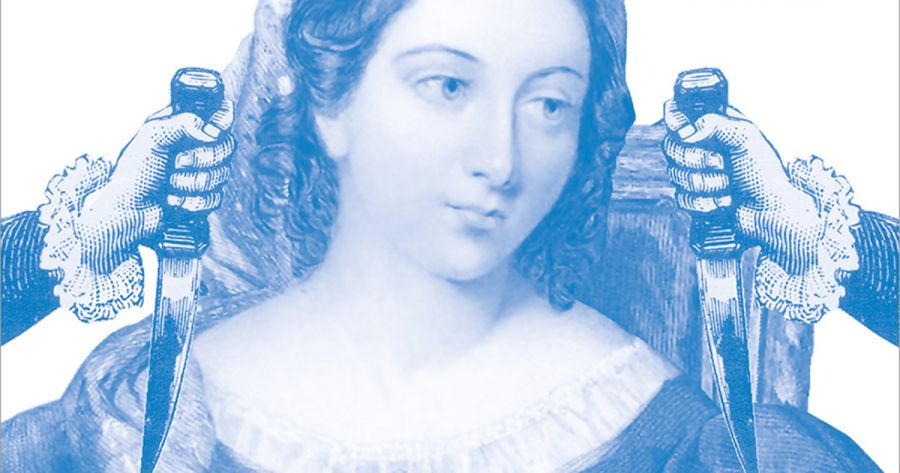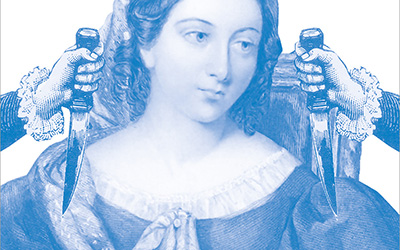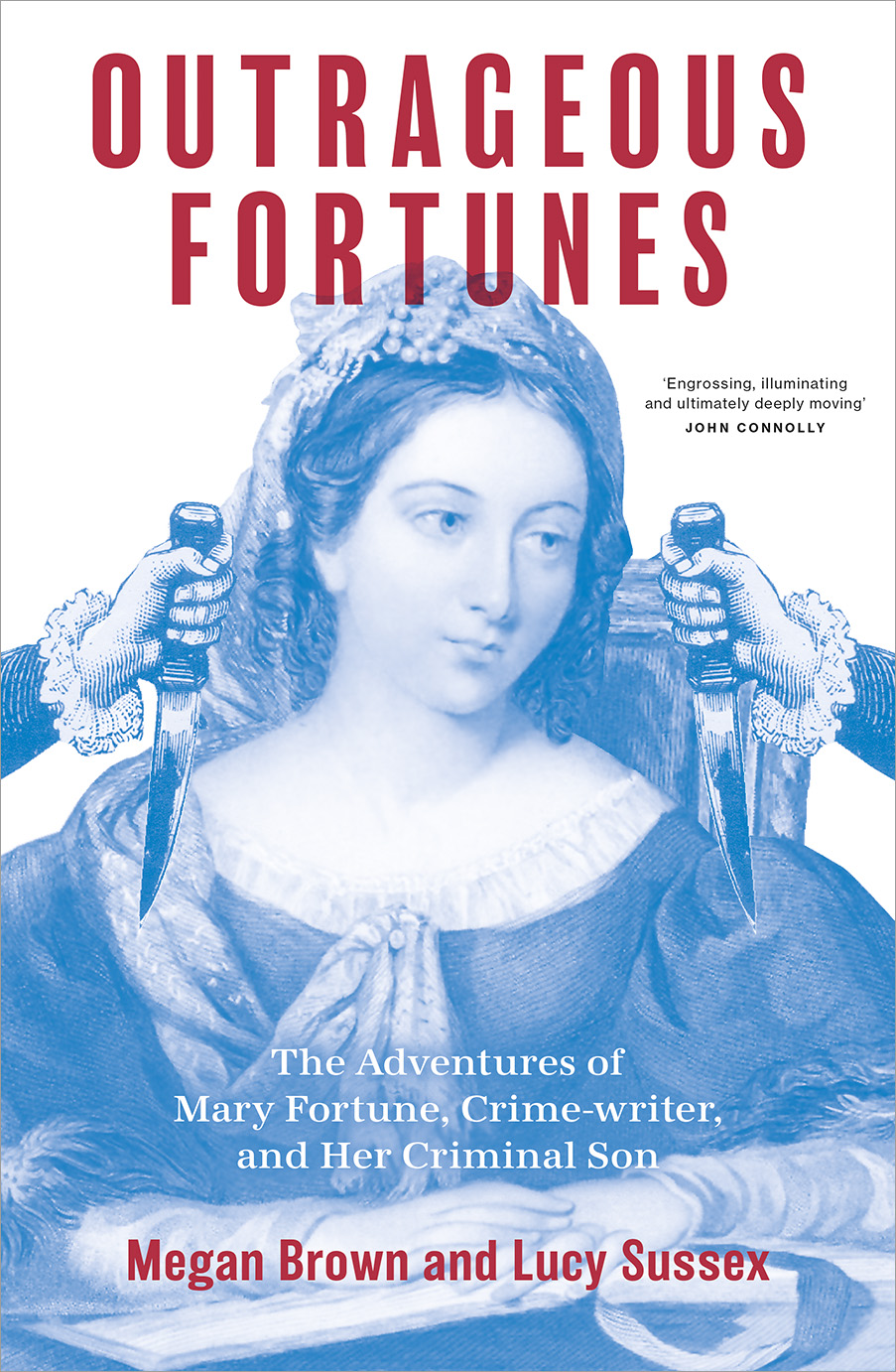
- Free Article: No
- Contents Category: Biography
- Review Article: Yes
- Article Title: History’s wild forces
- Article Subtitle: Two Australian lives
- Online Only: No
- Custom Highlight Text:
To begin, a reviewer’s disclosure: I have known Lucy Sussex since we worked together in the mid-1990s on a research project about nineteenth-century Australian women’s writing. Lucy had already been following the various trails and clues left by crime writer Mary Fortune (1832–1911) along the winding, dimly lit corridors of pre-digital cultural history, as she reports at the end of this book: ‘In 1987 I moved from librarianship to working as a researcher for Professor Stephen Knight … I got the delightful job of largely reading old and vintage crime texts and reporting back … Stephen asked me to look into “Mrs Fortune” [and later] told me that Mary Fortune was no longer his research project, but mine. “You have that gleam in your eye!” he said.’
- Featured Image (400px * 250px):

- Alt Tag (Featured Image): Kerryn Goldsworthy reviews ‘Outrageous Fortunes: The adventures of Mary Fortune, crime-writer, and her criminal son’ by Megan Brown and Lucy Sussex
- Book 1 Title: Outrageous Fortunes
- Book 1 Subtitle: The adventures of Mary Fortune, crime-writer, and her criminal son
- Book 1 Biblio: La Trobe University Press, $36.99 pb, 341 pp
- Book 1 Cover Small (400 x 600):

- Book 1 Cover (800 x 1200):

- Book 1 Readings Link: https://www.readings.com.au/product/9781760645052/outrageous-fortunes--lucy-sussex-megan-brown--2025--9781760645052#rac:jokjjzr6ly9m
Co-author Megan Brown adds her part in the story of their subsequent collaboration, after research into the subject of female journalists in colonial Australia had led her to the distinctive voice of Mary Fortune: ‘Just when you think you must step away from this subject, you discover yet another story and find yourself back in her labyrinth of truths, half-truths and hidden cheeky self-references. It was inevitable that Lucy and I would join forces to untangle it.’
Brown and Sussex explore Fortune’s several reasons for writing pseudonymously, something that obviously made their job more difficult. She mainly used the suggestive alias ‘Waif Wander’; other pen names included ‘W.W.’, her own real initials M.H.F., several variations on ‘Nobody’, and ‘Sylphid’, which – like ‘Waif Wander’ – suggests some delicate and elusive being. A pioneer of crime fiction and of Australian writing, prolific across decades, Fortune used and recycled and re-recycled her shrewd, unflinching observations of colonial crime and punishment, as well as variously tweaked details from her own life.
This is what the authors mean when they write of the difficulties in ferreting out the details of Fortune’s life, and the necessity for close detective work in their research. Even so, the story told here still has gaps. ‘Although she lived in Melbourne, a centre of literary bohemia, nobody seemed to know her; or if they did, they kept quiet … [She] inhabits negative spaces, hidden in plain sight.’
Born in Belfast in 1832, the teenage Mary Wilson emigrated to Canada with her widowed father in the 1840s. She married Joseph Fortune in Quebec in 1851 and her first child was born in 1852. The marriage ended or was ended, and ‘the evidence points to Mary having done a runner with the child’. Mother and son disembarked in Melbourne in October of 1855. Her son died in childhood, but a little over a year earlier she had given birth to a second child whom the authors speculate may have been conceived as a result of sexual assault. Two years later she married – bigamously, as Sussex discovered early in her research – a clever, handsome, and very young policeman.
It was to be another short-lived marriage as well as a legally invalid one, but seeing and hearing about his experience as a mounted constable on the goldfields gave Fortune an apparently bottomless well of material: ‘What made her a pioneering writer of what would be termed police procedurals was a young man in uniform: Percy Rollo Brett. Their association was brief, but Mary mined it for the rest of her life.’
Brown and Sussex – gifted and indefatigable researchers – report having found virtually no trace of Fortune’s life for the seven years following her marriage to Brett. In 1865 she reappears in the professional persona that she was to use for the rest of her life: a working writer and a regular contributor to a new publication, The Australasian Journal. Fortune was astonishingly prolific and inventive in her crime fiction, a genre then in its infancy; the first Sherlock Holmes story would not appear for another twenty-two years.
Mary Fortune lived a startlingly long time for a nineteenth-century woman whose life was insecure and rackety, whose powerful and lively personality must have led her into trouble more than once, and who, as the authors put it, ‘liked a drink’. By the time she was thirty-three she had lived in three countries, married and parted from two husbands, committed bigamy, and given birth to two sons, both called George, one dead at the age of seven and the other illegitimate and possibly a child of rape. This second George is the ‘criminal son’ of the book’s subtitle: at the age of fourteen he was arrested in Melbourne for stealing a hat, and despite the fact that his personality shines through this book’s account of him as both intelligent and endearing, he remained an incorrigible thief and chronic recidivist till his death of kidney disease in prison when he was fifty.
Much of the book’s second half tells the story of George’s life of crime, in which he both affected and was affected by his mother’s work and reputation as a crime writer. Perhaps because so much official information is available about his crimes and punishments, what tends to get lost here is the other less tangible but more essential elements of his story: the circumstances of his birth and upbringing, the way that the law dealt with children and criminals, and the fact that George almost certainly had the kind of personality disorder that made him reoffend repeatedly.
The story of Mary’s life has a strong narrative arc, yet the shape of George’s story is more like a carousel, with the brightly painted horses of crime, arrest, incarceration, and release coming around again and again. The two life stories don’t always mesh into a shapely narrative. But this book combines scrupulous scholarship with lively, stylish writing, and like all good biographies it weaves the details of its subjects’ lives with the global events and the social mores and movements that produced them, their lives shaped by the wild forces of history.


Comments powered by CComment